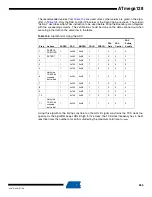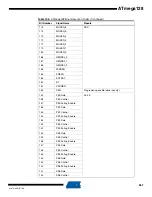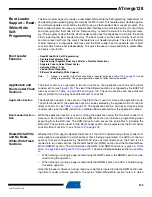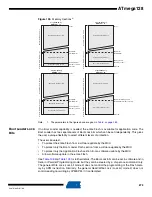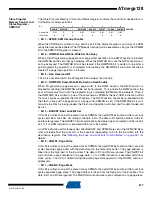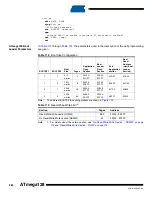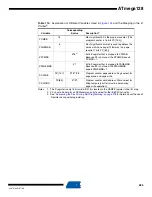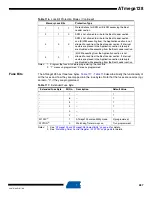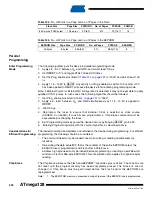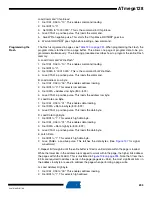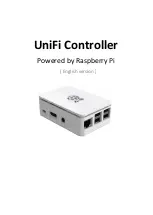
279
2467S–AVR–07/09
ATmega128
Figure 134.
Addressing the Flash During SPM
Notes:
1. The different variables used in
.
2. PCPAGE and PCWORD are listed in
.
Self-Programming
the Flash
The program memory is updated in a page by page fashion. Before programming a page with
the data stored in the temporary page buffer, the page must be erased. The temporary page buf-
fer is filled one word at a time using SPM and the buffer can be filled either before the page
erase command or between a page erase and a page write operation:
Alternative 1, fill the buffer before a page erase
•
Fill temporary page buffer
•
Perform a page erase
•
Perform a page write
Alternative 2, fill the buffer after page erase
•
Perform a page erase
•
Fill temporary page buffer
•
Perform a page write
If only a part of the page needs to be changed, the rest of the page must be stored (for example
in the temporary page buffer) before the erase, and then be rewritten. When using alternative 1,
the Boot Loader provides an effective Read-Modify-Write feature which allows the user software
to first read the page, do the necessary changes, and then write back the modified data. If alter-
native 2 is used, it is not possible to read the old data while loading since the page is already
erased. The temporary page buffer can be accessed in a random sequence. It is essential that
the page address used in both the page erase and page write operation is addressing the same
page. See
“Simple Assembly Code Example for a Boot Loader” on page 282
for an assembly
code example.
PROGRAM MEMORY
0
1
15
Z - REGISTER
BIT
0
ZPAGEMSB
WORD ADDRESS
WITHIN A PAGE
PAGE ADDRESS
WITHIN THE FLASH
ZPCMSB
INSTRUCTION WORD
PAGE
PCWORD[PAGEMSB:0]:
00
01
02
PAGEEND
PAGE
PCWORD
PCPAGE
PCMSB
PAGEMSB
PROGRAM
COUNTER
RAMPZ
Содержание ATmega128
Страница 384: ...vi 2467S AVR 07 09 ATmega128 Rev 2467C 02 02 377 Table of Contents i...
Страница 385: ...vii 2467S AVR 07 09 ATmega128...

